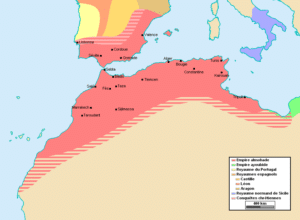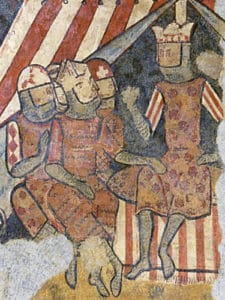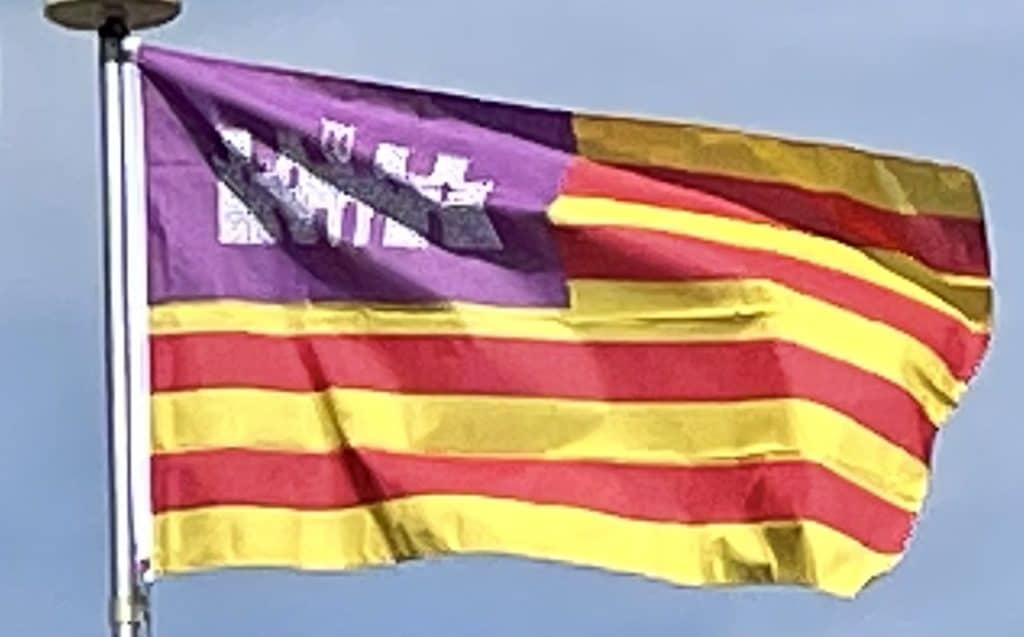In 902, the heavy use of the islands as a pirate base provoked the Emirate of Córdoba, nominally the island’s overlords, to invade and incorporate the islands into their state. However, the Cordoban emirate disintegrated in civil war and partition in the early eleventh century, breaking into smaller states called taifa. Mujahid al-Siqlabi, the ruler of the Taifa of Dénia, sent a fleet and seized control of the islands in 1015, using it as the base for subsequent expeditions to Sardinia and Pisa. In 1050, the island’s governor Abd Allah ibn Aglab rebelled and established the independent Taifa of Mallorca.
The Crusade Against the Balearics:
For centuries, the Balearic sailors and pirates had been masters of the western Mediterranean. But the expanding influence of the Italian maritime republics and the shift of power on the Iberian peninsula from the Muslim states to the Christian states left the islands vulnerable. A crusade was launched in 1113. Led by Ugo da Parlascio Ebriaco and Archbishop Pietro Moriconi of the Republic of Pisa, the expedition included 420 ships, a large army and a personal envoy from Pope Paschal II.
The crusade sacked Palma in 1115 and generally reduced the islands, ending its period as a great sea power, but then withdrew. Within a year, the now shattered islands were conquered by the Berber Almoravid dynasty, whose aggressive, militant approach to religion mirrored that of the crusaders and departed from the island’s history as a tolerant haven under Cordoba and the taifa. The Almoravids were conquered and deposed in North Africa and on the Iberian Peninsula by the rival Almohad Dynasty of Marrakech in 1147.

Muhammad ibn Ganiya, the Almoravid claimant, fled to Palma and established his capital there. His dynasty, the Banu Ghaniya, sought allies in their effort to recover their kingdom from the Almohads, leading them to grant Genoa and Pisa their first commercial concessions on the islands. In 1184, an expedition was sent to recapture Ifriqiya (the coastal areas of what is today Tunisia, eastern Algeria, and western Libya) but ended in defeat. Fearing reprisals, the inhabitants of the Balearics rebelled against the Almoravids and accepted Almohad suzerainty in 1187.
Reconquista:
On the last day of 1229, King James I of Aragon captured Palma after a three-month siege. The rest of Mallorca quickly followed. Menorca fell in 1232 and Ibiza in 1235. In 1236, James traded most of the islands to Peter I, Count of Urgell for Urgell, which he incorporated into his kingdom. Peter ruled from Palma, but after his death without issue in 1258, the islands reverted by the terms of the deal to the Crown of Aragon.

James died in 1276, having partitioned his domains between his sons in his will. The will created a new Kingdom of Mallorca from the Balearic islands and the mainland counties of Roussillon or Montpellier, which was left to his son James II. However, the terms of the will specified that the new kingdom be a vassal state to the Crown of Aragon, which was left to his older brother Peter. Chafing under the vassalage, James joined forces with the Pope Martin IV and Philip III of France against his brother in the Aragonese Crusade, leading to a 10-year Aragonese occupation before the islands were restored in the 1295 Treaty of Anagni. The tension between the kingdoms continued through the generations until James’ grandson James III was killed by the invading army of Peter’s grandson Peter IV at the 1349 Battle of Llucmajor. The Balearic Islands were then incorporated directly into the Crown of Aragon.
Modern Period:
In 1469, Ferdinand II of Aragon (king of Aragon) and Isabella I of Castile (queen of Castile) were married. After their deaths, their respective territories (until then governed separately) were governed jointly, in the person of their grandson, the Emperor Charles V. This can be considered the foundation of the modern Spanish state, albeit a decentralized one wherein the various component territories within the united crowns retained their particular historic laws and privileges.
